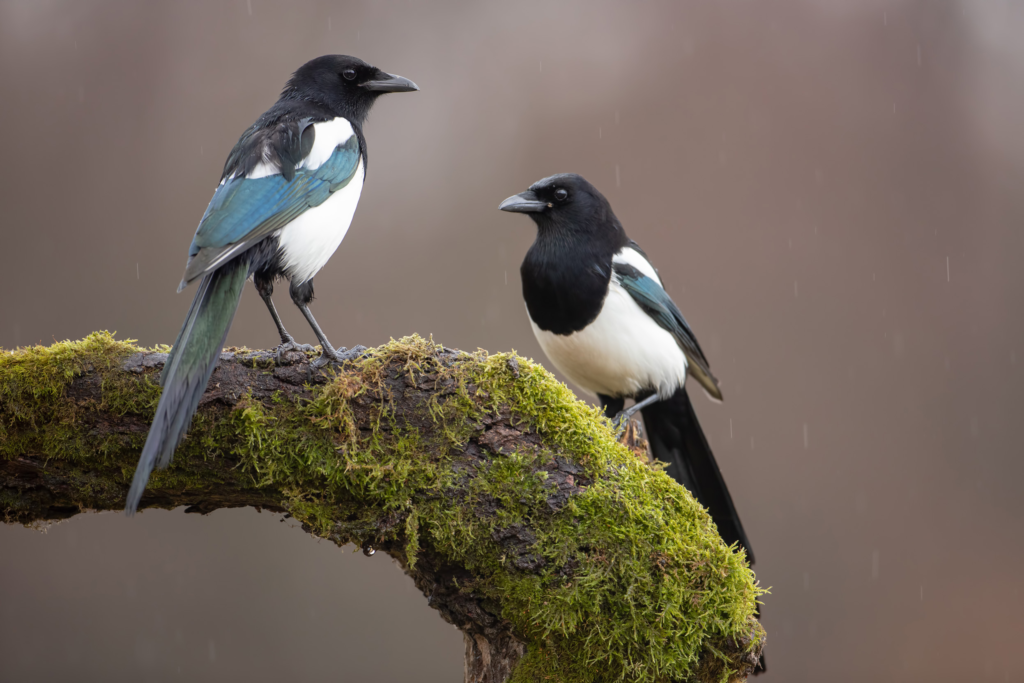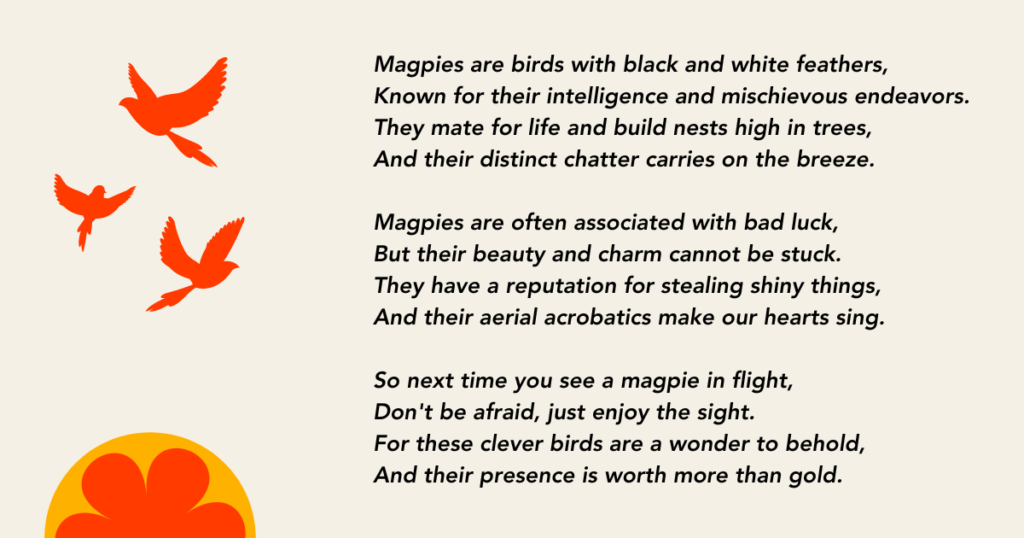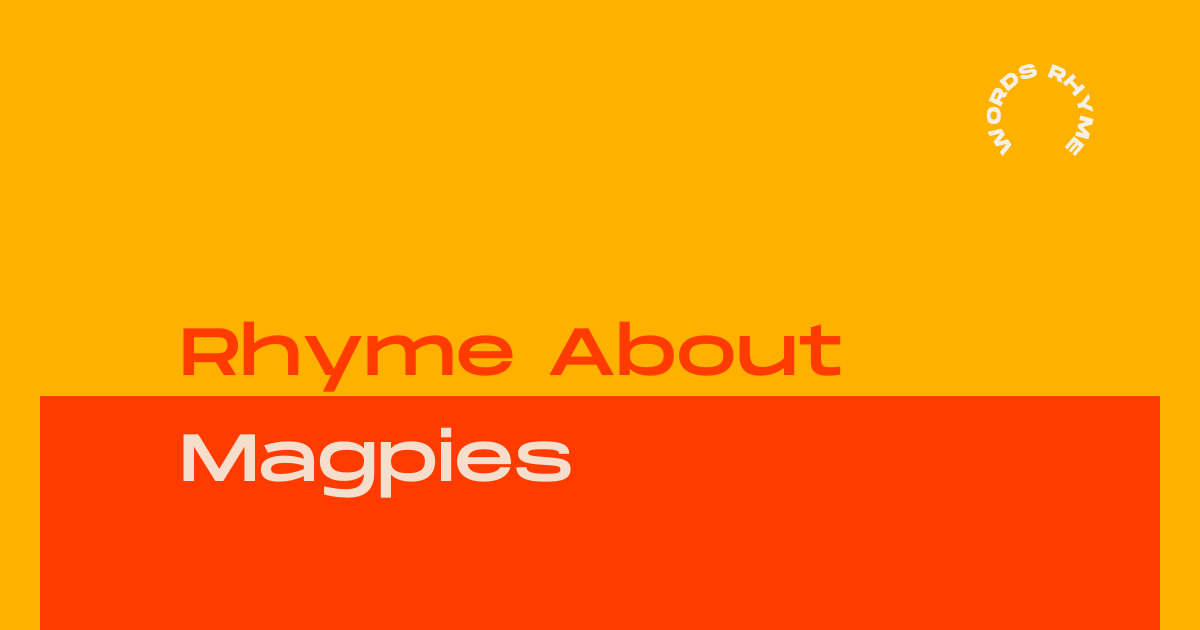One For Sorrow,
Two For Joy
Rhyme about Magpies
Gather round, curious peeps – I’ve got a rhyming riddle about magpies to unlock! For centuries, people have pondered the meaning behind this old adage: “One for sorrow, two for joy”.
Well today, we’re cracking the code behind these clever corvids and the omens they foretell. We’ll dive into the history, lore and science to explain what’s really going on with magpies one and two.

Table of Contents
Rhyme About Magpies
One of the earliest versions to extend this was published, with variations, in Michael Aislabie Denham’s Proverbs and Popular Sayings (London, 1846):
One for sorrow,
Two for luck
Three for a wedding,
Four for death
Five for silver,
Six for gold;
Seven for a secret,
Not to be told;
Eight for heaven,
Nine for hell,
And ten for the devil’s own sell
The most well-known magpie nursery rhyme is as follows:
One for sorrow,
Two for joy,
Three for a girl,
Four for a boy,
Five for silver,
Six for gold,
Seven for a secret,
Never to be told.
However, few other alternative versions and longer rhymes have been found elsewhere, which count up to 13 magpies with extra lines as below:
Eight for a wish,
Nine for a kiss,
Ten a surprise you should be careful not to miss,
Eleven for health,
Twelve for wealth,
Thirteen beware it’s the devil himself.
There is even another different version that was written for the popular children’s TV programme Magpie:
One for sorrow,
Two for joy,
Three for a girl,
Four for a boy,
Five for silver,
Six for gold,
Seven for a secret never to be told,
Eight for a wish,
Nine for a kiss,
Ten for a bird,
You must not miss.
Origins and Symbolism of The Rhyme about Magpies
Magpies, with their pitch black, blue and white plumage, have long been birds of superstition. They’re often associated with witchcraft, and seeing one is considered a sign, good or bad.
The rhyme itself likely originated in the 18th century and was a way for people to make sense of the world around them, particularly the natural world, which was full of signs and omens. Each line of the rhyme represents a different prediction or fortune, depending on how many magpies you see.
Today, the rhyme is more of a fun cultural artifact than a serious superstition. It’s a nod to our ancestors’ attempts to understand and predict their world. For bird lovers, it’s a charming way to observe these intelligent and curious birds.
A Closing Remark
So, what is your favourite variation of the magpie rhymes?
From sorrowful solos to joyful duets, magpies have shared their tales with us, leaving an indelible mark on our imagination. Next time, if you spot a magpie, let’s remind yourself of the beautiful poems you’ve read, and let’s join in the rhyme of nature’s symphony.



